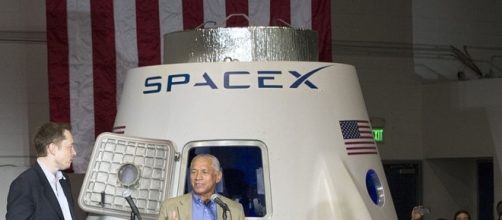Elon Musk and SpaceX have become an integral part of space exploration, and they keep posting new landmarks in Man’s efforts to conquer space. The recycled Dragon Capsule of SpaceX got its name embedded in the annals of history when it flew two missions.
It had carried supplies to the International Space Station and splashed down off the coast of California, as planned. The Dragon was released by the space station's robotic arm, and its journey to splash took slightly more than five hours. It was the second mission for the capsule, and it returned with cargo from ISS which will now be sent to NASA.
Earlier, it had shifted supplies and equipment to ISS in 2014.
Reuse of the capsule will reduce costs
Daily Mail UK reports that journey into Space is a costly affair and if parts of the rockets and spacecraft can be reused, it will reduce the cost of launches. The latest mission is the 11th cargo resupply trip to the ISS and is covered in a contract between SpaceX and NASA.
Another version of Dragon capsule is believed to be in the pipeline, and it would carry crew to the space station. It can boast of a checkered career. In September 2014 it delivered nearly 2.5 tons of cargo to the ISS and came back after a month. SpaceX is a California-based company headed by Elon Musk, and it has designed the first stage of its Falcon 9 rockets to carry out upright landings on Earth.
This is a step towards the reduction of wastage and is a dedicated effort to bring down the cost of spaceflight.
What has come back from ISS?
The SpaceX cargo spacecraft has returned from the International Space Station with results of several technological and biological studies undertaken there. These pertain to the effect of a different environment in space on living beings and how they react. Such studies are necessary to understand the likely impact on humans and Elon Musk has shown the foresight that reuse of the capsule is possible, and it pays dividends.
The living beings in the present case were fruit flies and rodents. The experiments with the fruit fly were to understand the effects of prolonged exposure to microgravity on the heart.
As to rodents, they were used to test a new drug that can rebuild bone, block further bone loss and improve the health of those on board the ISS.
The purpose of such experiments is to ascertain how spaceflight affects the cardiovascular system and develop countermeasures accordingly which will help astronauts.
Incidentally, the first-ever recycled spaceship of SpaceX arrived at the International Space Station with a load of nearly 6,000 pounds. The load was necessary material for scientific research, crew supplies, and hardware. It was a landmark event because Dragon capsule was the first US spaceship to arrive at the sky lab after NASA ended its space shuttle program in 2011.


